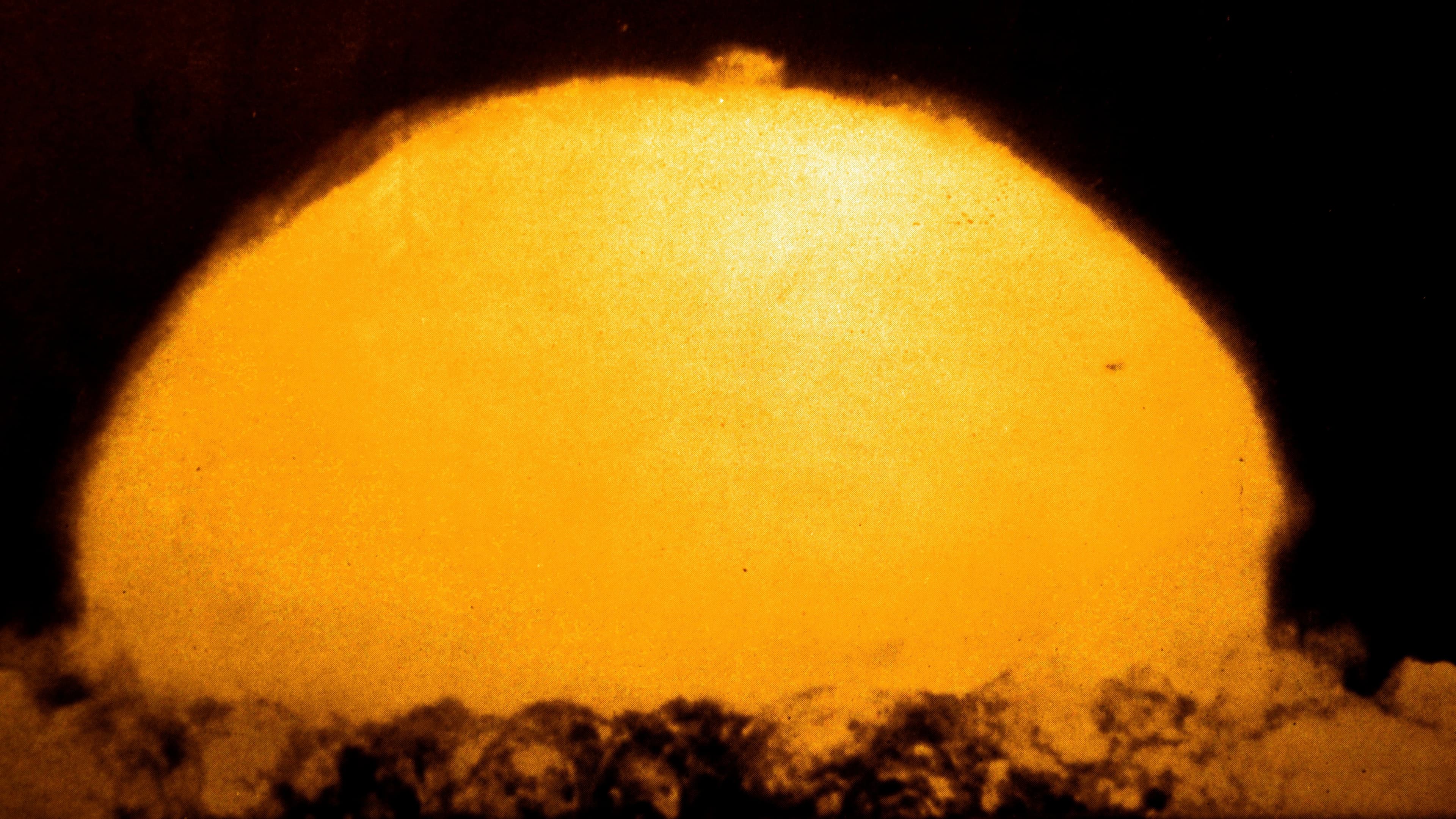On April 25, 1945, President Harry S. Truman learns the full details of the Manhattan Project, in which scientists are attempting to create the first atomic bomb. The information thrust upon Truman a momentous decision: whether or not to use the world’s first weapon of mass destruction.
America’s secret development of the atomic bomb began in 1939 with then-President Franklin Roosevelt’s support. The project was so secret that FDR did not even inform his fourth-term vice president, Truman, that it existed. (In fact, when Truman’s 1943 senatorial investigations into war-production expenditures led him to ask questions about a suspicious plant in Minneapolis, which was secretly connected with the Manhattan Project, Truman received a stern phone call from FDR’s secretary of war, Harry Stimson, warning him not to inquire further.)
When President Roosevelt died on April 12, 1945, Truman was immediately sworn in and, soon after, was informed by Stimson of a new and terrible weapon being developed by physicists in New Mexico. In his diary that night, Truman noted that he had been informed that the U.S. was perfecting an explosive great enough to destroy the whole world.
On April 25, Stimson and the army general in charge of the project, Leslie Groves, brought Truman a file full of reports and details on the Manhattan Project. They told Truman that although the U.S. was the only country with the resources to develop the bomb–eliminating fears that Germany was close to developing the weapon–the Russians could possibly have atomic weapons within four years. They discussed if, and with which allies, they should share the information and how the new weapon would affect U.S. foreign-policy decisions. Truman authorized the continuation of the project and agreed to form an interim committee that would advise the president on using the weapon.
Although the war in Europe ended in May 1945, Stimson advised Truman that the bomb might be useful in intimidating Soviet leader Joseph Stalin into curtailing post-war communist expansion into Eastern Europe. On July 16, the team of scientists at the Alamogordo, New Mexico, research station successfully exploded the first atomic bomb. Truman gave Stimson the handwritten order to release when ready but not sooner than August 2 on July 31, 1945.
The first bomb was exploded over Hiroshima on August 6, 1945, and a second was dropped on Nagasaki on August 9. The Japanese quickly surrendered. Although other nations have developed atomic weapons and nuclear technology since 1945, Truman remains the only world leader to have ever used an atomic bomb against an enemy.
